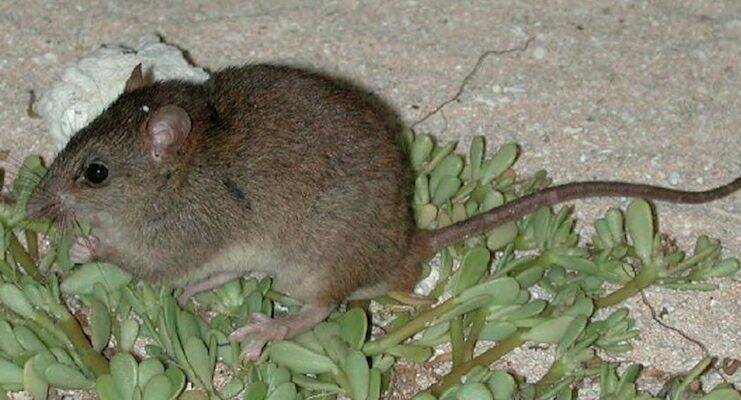
Warming temperatures have caused mass mortality of plants and animals around the globe, including the first climate-driven extinction in Australia, the Intergovernmental Panel on Climate Change has found.
Released on Monday, the report found the threat to species was a global risk, increasing significantly with every additional tenth-degree of warming.
Examining climate change's effect on more than 970 species, scientists reported Australia's Bramble Cay melomys was likely the victim of sea-level rise and increased storm surges in the Torres Strait.
A subspecies of the lemuroid ringtail possum in Queensland also all but disappeared after heatwaves in 2005, with just two individuals identified in 2009, according to the report.
The Great Barrier Reef had suffered extensive bleaching and Australia had already suffered the loss of temperate kelp forests due to ocean warming and marine heatwaves, authors found.
Griffith University Professor and co-author Brendan Mackey said during the 2019-20 bushfires 114 threatened species lost at least half of their habitat, with 49 of them losing over 80 per cent.
"More extreme fire weather is projected in southern and eastern Australia," Professor Mackey said.
"The degree of global warming, the associated increase in climate trends and extreme events, their impacts ... [depend] very much on the success of global mitigation efforts."
As part of the report, co-authored by academics around the globe, scientists examined thousands of papers researching global warming's effects.
Their assessments found it was highly likely 3 to 14 per cent of species of terrestrial ecosystems would face a very high risk of extinction at global warming of 1.5 degrees.
The risk of extinction of land-based ecosystems increased to 3 to 18 per cent at 2 degrees, 3 to 29 per cent at 3 degrees, 3 to 39 per cent at 4 degrees, and 3 to 48 per cent at 5 degrees.
The report found near-term action that limited global warming to close to 1.5 degrees would substantially reduce projected losses and damages, but would not eliminate them all
IPCC vice-chair and fellow report co-author Professor Mark Howden, of the Australian National University, said despite the Paris climate agreement and commitments made at Glasgow, the world was still headed towards more than 2 degrees, and possibly even 3 degrees, of warming.
"Climate change impacts are here, they matter, they are mostly negative but, if implemented, adaptation can take the edge off them," Professor Howden said.
"We can go on a high-emissions trajectory, which we're currently on, or we can go on a low-emissions trajectory ... consistent with the Paris Agreement."
Professor Howden said there were two clear avenues for action: reducing greenhouse-gas emissions, and adapting to changes already being experienced.
"Whether it's our agriculture, whether it's our water, whether it's our buildings, they will all get affected by climate change," he said.
"We need to be putting in place the capability that enables us to deal with that, and investing in the research and development that gives us options we simply don't have in our toolkit right now."
Professor Howden said that since the last report, there had been numerous temperature records broken across the globe, as well as continued extreme weather events.
"It's the floods that we're seeing right now, and in El Nino years it's the heat stress and dry conditions which reduce agricultural productivity, reduce water availability and increase fire risk," he said.
"The dangers are near and present, they're not a future thing."
Professor Howden said Australia had "largely dropped the ball" on adaptation to increased climate risk.
"We are seeing very much a fragmented and partial approach," he said.
"We need to have a comprehensive approach which deals with how we integrate climate issues into the mainstream."
The analysis found maintaining the resilience of biodiversity and ecosystem services at a global scale depended on the conservation of about 30 to 50 per cent of the Earth's land, freshwater and ocean areas.
"What this report shows is that ... [our] climate adaptation options decline with higher levels of temperature change," Professor Howden said.







